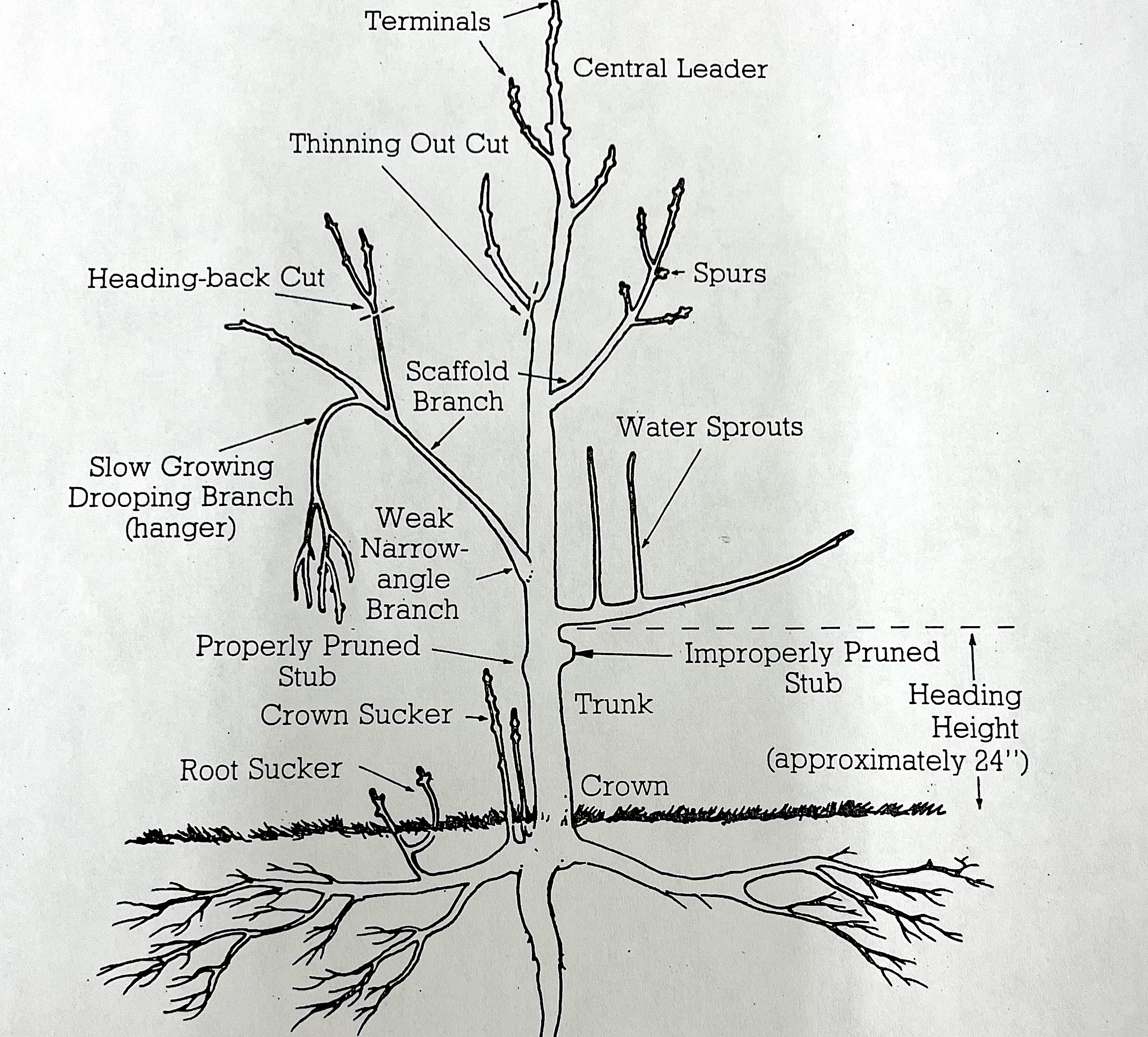The Hort Report: Pruning fruit trees in early spring helps them produce more

We have seen a lot of moisture get into the ground during the past few days from all the rain and melting snow. This will help build up the moisture in the soil.
The South Shelby Adult Vo-Ag Horticulture had its first class on Jan. 23. Plans are to be starting seeds by Feb. 13. Classes start at 5:30 p.m. every Tuesday in the South Shelby Vo-Ag Classroom.
The weather forecast for the next several days is going to be above normal, but you still have time to prune your fruit trees for this year’s growing season. Prune fruit trees in late winter or very early spring before they start to grow new limbs, twigs and buds.
Fruit trees are pruned either by using the central leader or open-center form of fruit tree pruning. The central leader form of pruning is used on apple trees. The open-center form of pruning is used on cherry and peach trees.
Pruning fruit trees helps them produce more fruit. New fruit only grows on the new buds forming for this year, so when I prune, I’m pruning for maximum fruit production.
When pruning any type of fruit tree, have a plan on where to start. Don’t prune too much at a time or too fast. Take your time.
Start at the base of the tree trunk, pruning all the root sucker and crown suckers first. They sap nutrients and water from the tree.
Then prune off limbs and branches that are too low to the ground so they won’t hit you in the head when mowing or walking around the tree picking up fruit.
Then stand back and see what limbs and branches are broken, rubbing or touching each other. Damaged or diseased limbs should be pruned at this time as well as any that appear weak and drooping.
When pruning apple trees, you want the tree to be growing with all the limbs and branches coming off the center trunk of the tree. Make sure that you have plenty of room between the main branches coming from the center of the tree so you can have room to pick fruit off the tree.
Stand on the ground to see where all the fruit will be when the time comes to harvest the new apples. Most of the fruit will be out on the tips of the new branches, limbs and twigs. If any branches and limbs are in my way when I look up to see where the new fruit will be growing come harvest, I will cut them out of the way to have a clear path to see and pick the fruit.
How to prune cherry and peach trees using the open center form of pruning fruit trees will be explained in the next Hort Report.
Some early cool season vegetables could be growing by the middle of February by using a cold frame or hotbed. Start them in a raised bed or your garden if the soil is warm enough.
Early cool-season vegetables you could be growing soon are radishes, lettuce, onions, peas, beets, collards, mustard, carrots, kale, spinach, turnips, chard and potatoes. Other cool-season vegetables you can grow now by transplanting them into the soil are broccoli, cabbage and cauliflowers.
By getting these types of cool-season vegetables in the soil early, you can grow a double or fall crop in the same garden spot.
I appreciate all your questions in the past and look forward to them in the future. Contact me at 573-588-2040 or sci63468@hotmail.com or come see me at Shelby County Implement in Shelbina.
Enjoy this great weather.

Pat Greenwell is the owner of Shelby County Implement in Shelbina, Mo. He was a high school agriculture teacher for 11 years. He has taught adult vocational agriculture since 1987. He also is a research assistant at the Truman State University Ag Department Farm.
Miss Clipping Out Stories to Save for Later?
Click the Purchase Story button below to order a print of this story. We will print it for you on matte photo paper to keep forever.

